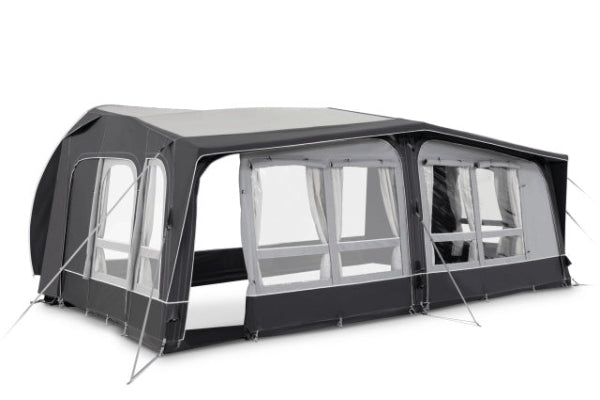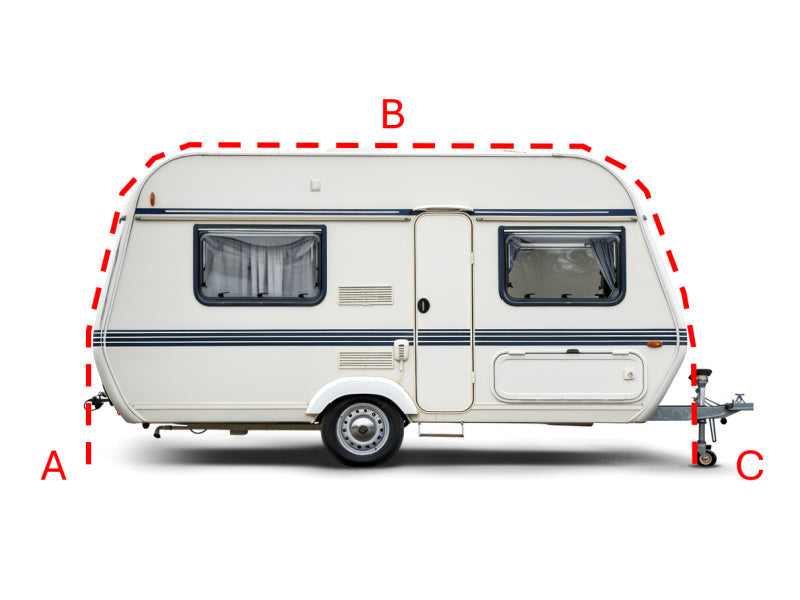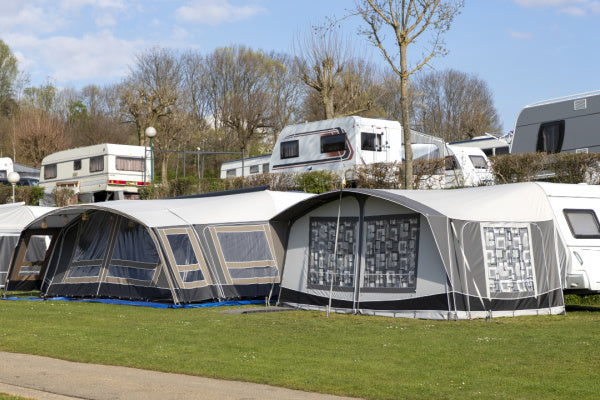Caravan Awning in High Winds: How to Secure
Ever watched your awning transform into an impromptu kite? You're not alone! While these essential camping companions can turn rebellious in high winds, the solution is straightforward: proper securing techniques and the right equipment. From storm straps to ground anchors, we'll show you how to keep your caravan awning firmly earthbound.

Securing Your Caravan Awning in Windy Conditions
Nothing ruins a peaceful camping holiday quite like watching your awning thrash about in strong winds. Securing caravan awnings properly can mean the difference between relaxing with a cuppa and spending hours battling with billowing fabric.
Let's dive into proven techniques that keep awnings secure, even when the weather turns rough.
Wind-Resistant Setup Techniques
The key to withstanding wind lies in the initial setup. Many campers rush this crucial step, eager to start their holiday. Taking extra time during setup saves hours of stress later.
Every successful setup starts with checking the weather forecast and choosing the right position. Whenever possible, position the caravan to minimise wind exposure.
Using Extra Pegs and Guy Lines
Standard pegs often prove inadequate in challenging conditions. Heavy-duty ground anchors offer superior holding power in all soil types.
Drive pegs at a 45-degree angle, pointing away from the awning. This angle creates maximum resistance against upward pull. Space them evenly around the awning's perimeter to distribute tension properly.
Rocky or hard ground requires special consideration. Rock pegs or specialist ground anchors might be necessary. Some experienced caravanners carry multiple peg types to handle various ground conditions.
In particularly challenging conditions, double-pegging critical points provides extra security. Focus on corners and areas where the awning meets the ground.

Tightening Guylines Properly
Proper guyline tension stands as one of the most crucial yet often overlooked aspects of awning security. Loose guylines allow excessive movement, while overtight lines risk damaging the fabric.
Check tension regularly throughout your stay. Weather changes can affect fabric tension significantly. Morning dew and temperature variations often require minor adjustments.
Storm straps provide essential additional support in windier conditions. Install these at main stress points along the awning's frame. Modern quick-release storm straps make this job significantly easier than older designs.
Professional tip: Mark optimal guyline positions on the ground with tent pegs once the perfect setup is achieved. This helps maintain proper tension when readjusting becomes necessary.
Using Windbreaks
Strategic windbreak placement can dramatically reduce wind impact on awnings. Position them slightly angled rather than perpendicular to wind direction. This deflects wind more effectively than trying to block it entirely.
Secure windbreaks thoroughly with dedicated pegs. A loose windbreak quickly becomes a hazard rather than a help. Consider using multiple windbreaks to create a more comprehensive wind barrier.
Leave small gaps between windbreaks to prevent wind tunnelling. This approach allows some airflow while still providing protection.
Reducing Awning Area
Sometimes less really is more. Reducing the awning's surface area exposed to wind significantly decreases strain on the structure.
Remove side panels when wind picks up. This simple step often makes the difference between a secure awning and a struggling one. Consider partial retraction in stronger winds while maintaining some usable space.
Keep the awning's height as low as practical. Higher setups catch more wind and create greater leverage against securing points.
When to Retract the Awning
Knowing when to admit defeat can save both equipment and nerves. Wind speeds exceeding 25-30 mph generally signal time to retract the awning completely.
Don't wait until conditions become severe. Retracting an awning in already strong winds proves both difficult and dangerous. Check evening forecasts and consider retracting overnight if strong winds threaten.
Local weather patterns matter significantly. Coastal areas often experience stronger winds than inland sites. Mountain valleys can funnel wind, creating unexpectedly strong gusts.

Warning Signs of High Wind Stress
Learning to recognise early warning signs prevents disaster. Watch for these key indicators:
Excessive fabric movement or rippling indicates increasing wind pressure. Even small ripples can quickly develop into problematic flapping.
Listen for unusual sounds. Creaking or straining noises from the frame or fixtures warrant immediate investigation.
Watch ground anchoring points carefully. Any sign of pegs lifting requires immediate attention. Often, early intervention prevents complete failure.
Monitor guyline tension changes. Sudden loosening or tightening might indicate shifting wind patterns or securing point failures.
Check the awning's shape regularly. Deformation or sagging often precedes more serious problems. Pay particular attention to seams and stress points.
Fabric stretching or small tears demand immediate action. These minor issues can rapidly develop into major failures under wind stress.
Regular monitoring becomes particularly important during weather changes. Dawn and dusk often bring wind speed changes as temperatures shift.
Remember that proper maintenance between trips significantly improves wind resistance. Clean, well-maintained awnings with solid seams and strong fixing points handle wind stress much better than neglected ones.
Store spare parts and repair materials in an easily accessible location. Quick access to extra pegs, guylines, or repair tape can make all the difference during sudden weather changes.
Finally, develop a quick-response plan for sudden weather changes. Knowing exactly what needs doing, and in what order, helps maintain calm during challenging conditions.
These comprehensive measures help ensure camping remains enjoyable, regardless of weather conditions. After all, the best camping memories come from staying dry and secure while others battle their awnings in the wind.
Other content you might like:
- Caravan awning not rolling up straight
- Caravan awning not retracting
- Caravan awning not locking
- Caravan awning on hardstanding
- How to secure a caravan awning in high winds?
- How do you tie down a caravan awning?
- When should I take my caravan awning down?
- How to stop caravan awning flapping?
- Why do some campsites say no awnings?
- Caravan awning flooring ideas
- Caravan awning furniture ideas
- Caravan awning storage ideas





Leave a comment